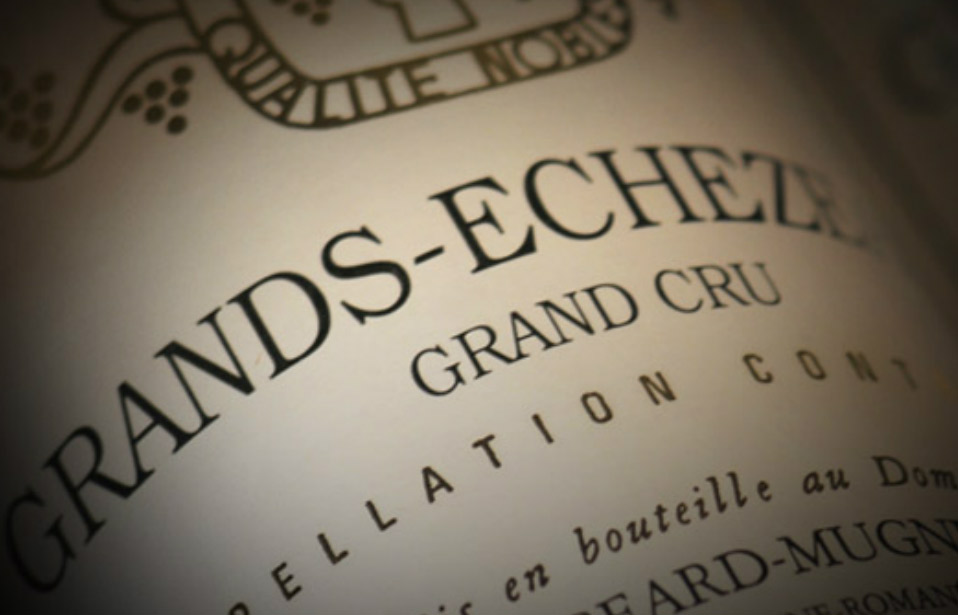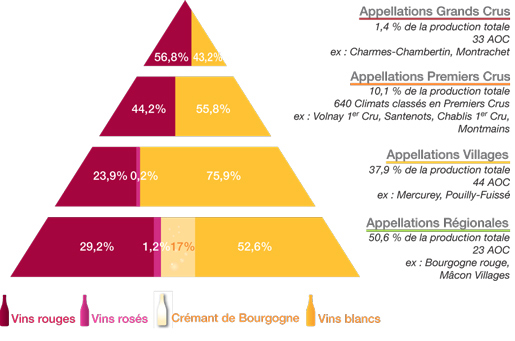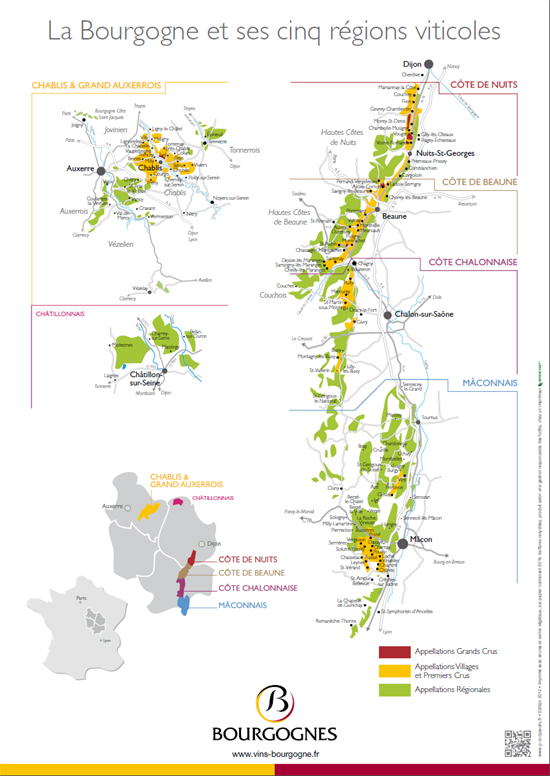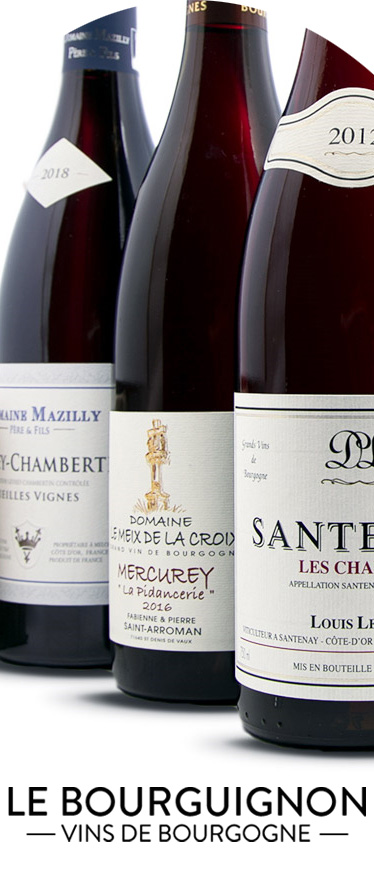Although the Burgundy vineyard is small in size (only 3% of wine production in France), it is extremely diverse: more than 100 different appellations, 4000 producers, more than 60,000 different wines in the end !… and a wide variety in prices. How to find your way around? Not simple, especially since it is therefore extremely important to build benchmarks before buying. The grape varieties used are the same throughout Burgundy (Pinot Noir for red wine and Chardonnay for white wine) Three gateways can be chosen: the burgundy wine regions, appellations, and appellation levels. The price of Burgundy wine must be a reference at the time of purchase, the ideal being to have an idea of the average price of the last vintage of the appellation. 1/ The wine regions of Burgundy There are 5 of them, it is an excellent gateway because they each have their own characteristics. – Chablis and Grand Auxerrois : composed mainly of white wines, it is a region that offers dry and fruity wines, rather lively iodized and mineral. – Côte de Nuits: kingdom of the very great red wines of Burgundy, with villages like Nuits St Georges, Vosne Romanée or Chambolle Musigny. Most of the red Grands Crus of Burgundy are on the Côte de Nuits. – Côte de Beaune : among the best white wines in the world with villages such as Meursault, Puligny Montrachet, Saint-Aubin… but also very beautiful red wines (Pommard, Volnay, Monthélie ..). Most of the great white wines of Burgundy are in the Côte de Beaune (Corton Charlemagne as well as the family of 5 Montrachet). – Côte Chalonnaise : no grands crus but magnificent wines in white or red: Mercurey, Montagny, Givry… and above all a very interesting value for money. – Mâconnais : as in Chablis especially white wines and prices … that remain affordable! 2/ Appellations Each plot of vine is located in a well-defined appellation, which will be marked in larger sizes on the label of the bottle. for example: Bourgogne Passetoutgrain, or Mercurey, or Gevrey Chambertin 1er Cru, or Corton Charlemagne Grand Cru. We can know that we prefer for example the Meursault to the Chablis, which are very different white wines. These areas are delimited and managed by the INAO, which has also defined quality levels of wine, made up in Burgundy of a hierarchy of four levels of appellations. 3/ The levels of appellations
Each plot of vine is located in a well-defined appellation, which will be marked in larger sizes on the label of the bottle. for example: Bourgogne Passetoutgrain, or Mercurey, or Gevrey Chambertin 1er Cru, or Corton Charlemagne Grand Cru. We can know that we prefer for example the Meursault to the Chablis, which are very different white wines. These areas are delimited and managed by the INAO, which has also defined quality levels of wine, made up in Burgundy of a hierarchy of four levels of appellations. 3/ The levels of appellations Everywhere in Burgundy the classification of wines will be the same (unlike Bordeaux). There are four levels of appellations, which are geographical boundaries. There may therefore be several producers on the same appellation (this is also the case in general). – Regional appellations, the cheapest, which represent about half of the production. These are all those that include "Burgundy" in the name. For example Crémant de Bourgogne, Bourgogne Aligoté, Bourgogne Hautes Côtes de Nuits… – The village (or communal) appellations , second level in quality. For example Mercurey, Gevrey-Chambertin, Meursault, Chablis…. The name of the appellation is that of a village, and the vineyards concerned are around this village. – The Premiers Crus : always linked to a Village name, the Premiers Crus are plots delimited within the village appellations. They also have a place name. For example Meursault 1er Cru Charmes, Givry 1er Cru les Grands Prétans, Chablis 1er Cru Fourchaume, etc … There are 670 of them! – The Grands Crus. There are 33 in Burgundy, which represent only 15% of wine production in Burgundy. they each have their own name: Charmes Chambertin, Romanée-Conti, Corton Charlemagne, Bâtard Montrachet… They must have the mention "Grand Cru indicated" after their name.
Everywhere in Burgundy the classification of wines will be the same (unlike Bordeaux). There are four levels of appellations, which are geographical boundaries. There may therefore be several producers on the same appellation (this is also the case in general). – Regional appellations, the cheapest, which represent about half of the production. These are all those that include "Burgundy" in the name. For example Crémant de Bourgogne, Bourgogne Aligoté, Bourgogne Hautes Côtes de Nuits… – The village (or communal) appellations , second level in quality. For example Mercurey, Gevrey-Chambertin, Meursault, Chablis…. The name of the appellation is that of a village, and the vineyards concerned are around this village. – The Premiers Crus : always linked to a Village name, the Premiers Crus are plots delimited within the village appellations. They also have a place name. For example Meursault 1er Cru Charmes, Givry 1er Cru les Grands Prétans, Chablis 1er Cru Fourchaume, etc … There are 670 of them! – The Grands Crus. There are 33 in Burgundy, which represent only 15% of wine production in Burgundy. they each have their own name: Charmes Chambertin, Romanée-Conti, Corton Charlemagne, Bâtard Montrachet… They must have the mention "Grand Cru indicated" after their name.
The price of Burgundy wine: how to find your way around
 The higher you go up in the pyramid, the more prices increase!
The higher you go up in the pyramid, the more prices increase!

